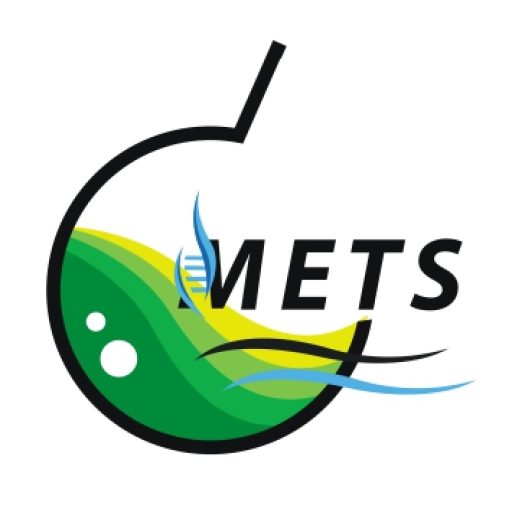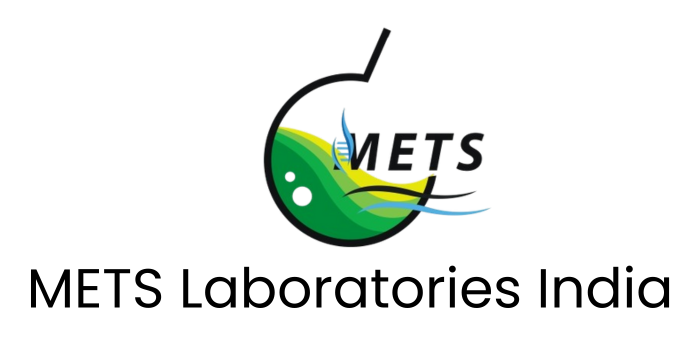
Non Destructive Testing – METS Laboratories
Non-Destructive Testing (NDT) comprises a range of analysis techniques used to evaluate materials, components, and systems without causing damage. These methods are essential for quality control, safety assurance, and structural integrity assessment across industries including manufacturing, construction, aerospace, and oil & gas. NDT helps detect surface and subsurface flaws, measure material properties, and verify compliance with specifications while preserving the tested object’s usability.
NDT techniques can identify cracks, corrosion, voids, inclusions, and other discontinuities that might compromise performance or safety. The methods vary from visual inspection to advanced technologies using ultrasound, radiation, and electromagnetism.
Importance of Non-Destructive Testing
A. Ensures Structural Integrity
Non-Destructive Testing serves as the frontline defense against structural failures through advanced flaw detection capabilities:
Critical Applications:
- Pressure Equipment:Detects stress corrosion cracking in refinery piping (ASME B31.3)
- Civil Infrastructure:Identifies concrete delamination in bridges (ASTM C876)
- Aerospace Components:Reveals fatigue cracks in turbine blades (NAS 410)
- Rail Systems:Finds internal defects in high-speed rail axles (EN 15085)
Advanced Techniques:
- Phased Array Ultrasonics (PAUT) for detailed weld inspection
- Time-of-Flight Diffraction (TOFD) for precise crack sizing
- Computed Radiography (CR) for digital imaging of complex geometries
- Guided Wave Testing for long-range pipeline screening
B. Enhances Safety in Operations
NDT transforms operational safety through proactive defect management:
Safety Critical Functions:
- Leak Prevention:Identifies pitting corrosion in storage tanks (API 653)
- Fatigue Monitoring:Tracks crack propagation in aircraft structures
- Corrosion Under Insulation (CUI):Detects hidden pipe degradation
- Composite Inspection:Evaluates bond integrity in wind turbine blades
C. Cost-Effective Quality Assurance
NDT delivers superior value compared to destructive methods:
Economic Advantages:
- Zero Material Loss:100% preservation of tested components
- In-Process Testing:Real-time quality control during manufacturing
- Inventory Protection:Allows testing of finished goods without damage
- Rapid Results:Immediate feedback for production adjustments
Industry-Specific Savings:
- Manufacturing:30-50% reduction in scrap rates
- Construction:20% decrease in rework costs
- Energy Sector:$500k+ savings per avoided shutdown
D. Regulatory Compliance
NDT forms the backbone of industrial compliance frameworks:
Mandatory Standards Coverage:
- ASME Section V:Complete NDT requirements for pressure equipment
- API 570/653:Pipeline and tank inspection protocols
- EN 473/ISO 9712:Personnel certification requirements
- NADCAP:Specialized aerospace accreditation
E. Supports Preventive Maintenance
NDT enables data-driven asset management strategies:
Condition Monitoring Applications:
- Thickness Monitoring:Ultrasonic trending of corrosion rates
- Vibration Analysis:Early bearing defect detection
- Thermography:Electrical component hot-spot identification
- Acoustic Emission:Real-time structural health monitoring
F. Facilitates Material Characterization
Advanced NDT provides comprehensive material intelligence:
Characterization Capabilities:
- Microstructure Analysis:Ultrasonic backscatter for grain size
- Coating Assessment:Eddy current for thickness uniformity
- Hardness Mapping:Ultrasonic contact impedance (UCI) method
Classification of Non Destructive Testing Methods
Type | Description |
Ultrasonic Testing (UT) | Uses high-frequency sound waves to detect internal flaws |
Radiographic Testing (RT) | Employs X-rays or gamma rays to examine internal structures |
Magnetic Particle Testing (MT) | Detects surface and near-surface flaws in ferromagnetic materials |
Liquid Penetrant Testing (PT) | Identifies surface-breaking defects through capillary action |
Eddy Current Testing (ET) | Uses electromagnetic induction to find cracks in conductive materials |
Visual Testing (VT) | Direct or aided visual inspection of components |
Acoustic Emission Testing (AE) | Monitors transient elastic waves from material stress |
Thermographic Testing (IRT) | Infrared imaging to detect thermal anomalies |
Purpose of Non Destructive Testing
- Quality Control– Verifies manufacturing processes and product quality
- In-Service Inspection – Monitors equipment condition during operation
- Failure Analysis – Investigates causes of component failures
- Research & Development – Supports new material and process development
- Asset Management – Provides data for life extension decisions
Applications of Non Destructive Testing
- Aerospace – Inspects aircraft components for fatigue cracks and corrosion
- Oil & Gas – Evaluates pipelines, storage tanks, and pressure vessels
- Automotive – Tests welds, castings, and structural components
- Power Generation – Examines turbine blades, boilers, and nuclear components
- Construction – Assesses concrete integrity and steel structures
- Manufacturing – Verifies product quality without damaging samples
Key Non Destructive Testing Methods and Standards
Parameter | Standard |
Thickness Measurement | ASTM E797 |
Weld Inspection | ASME Section V |
Phased Array UT | ISO 18563 |
Parameter | Standard |
Film Radiography | ASTM E94 |
Digital Radiography | ASTM E2698 |
Gamma Radiography | ISO 5579 |
Parameter | Standard |
Wet Fluorescent MT | ASTM E1444 |
Dry Powder MT | ISO 9934 |
Parameter | Standard |
Visible Dye PT | ASTM E1417 |
Fluorescent PT | ISO 3452 |
Parameter | Standard |
Conductivity Testing | ASTM E1004 |
Tube Inspection | ASTM E309 |
Why METS Laboratories India Pvt. Ltd. ?
NABL accredited, METS LABORTORIES INDIA PVT.LTD can test to a variety of the established methods (e.g., ISO, ASTMD, AOAC, APHA, FSSAI, BIS,)
- Our laboratory conducts testing on a wide range of products, materials, and components to verify compliance with standards, specifications, and regulatory requirements. Our team is happy to provide expert advice and guidance to ensure the appropriate water testing is carried out for your needs.
- Our dedicated, experienced, and friendly team is here to help—providing expert knowledge, guidance, and access to cutting-edge water testing capabilities and technologies in our laboratory.
- We conduct comprehensive product evaluations for appearance, quality, and performance. Our technical support network provides expert guidance—answering questions, interpreting results, and assisting with quality assurance program management.
- We participate in inter-laboratory proficiency testing and comparative analyses to ensure accuracy, reliability, and compliance with industry standards.
- We implement and maintain rigorous ISO/IEC 17025:2017 accreditation, ensuring internationally recognized standards for testing competence, measurement accuracy, and operational excellence in every analysis.
- We maintain strict customer confidentiality by treating all data as proprietary information.
What We Ensure?
- Data Integrity: Every result is generated and verified under strict quality assurance.
- Compliance: All tests conform to the latest regulatory and industry-specific guidelines.
- Transparency: Clear, easy-to-understand reports and consultation support.
- Confidentiality: Your data remains secure, private, and protected.
- Environmental Stewardship: Our labs follow eco-friendly practices and aim to minimize testing-related waste and emissions.
Who It’s For?
- Manufacturers, importers, and distributors of EEE products (e.g., electronics, cables, circuit boards, batteries).
- Industrial Facilities: To monitor effluents, emissions, and workplace safety
- Construction and Real Estate: For soil contamination, water logging, and indoor air quality
- Municipal Corporations: To assess urban air and water quality
- Schools, Hospitals & Hotels: For ensuring safe indoor environments
- Agricultural Communities: To test irrigation water and soil health
- NGOs & Research Institutions: For pollution studies and policy advocacy
- Citizens & RWAs: For local monitoring and complaint-based testing
Protect Consumers. Satisfy Authorities. Boost Market Confidence.
In today’s sustainability-driven world, businesses are held accountable by customers, investors, and regulators alike. METS Laboratories empowers you to:
• Protect your workforce and surrounding communities
• Achieve compliance with CPCB, SPCB, MoEF&CC, WHO, and ISO standards
• Build a reputation as an environmentally responsible brand
• Avoid costly penalties and legal action due to non-compliance
• Earn stakeholder trust with verified environmental claims and ESG reporting
Environmental testing isn’t just a legal formality—it’s a strategic asset.
Frequently Asked Questions
How do I book a test?
You can contact METS Laboratories via phone, email, or our website to schedule sampling or drop off a sample at our facility.
Is your lab accredited?
Yes, METS Laboratories is accredited under ISO/IEC 17025:2017.
How long does it take to get results?
Turnaround time depends on the parameters, but standard reports are typically delivered within 3–7 working days.
Do you provide on-site sampling?
Yes, we have trained field teams who follow strict SOPs for on-site sample collection.
Can I get help understanding the report?
Absolutely. We offer report interpretation and guidance on corrective actions or next steps.
What locations do you serve?
We serve clients across India and can coordinate with international partners when required.
Can you help with regulatory approvals?
Yes, our test reports are accepted by government authorities, and we can assist in documentation for environmental clearances.





